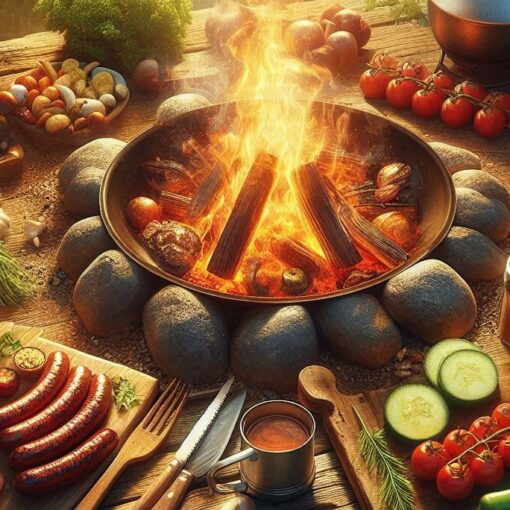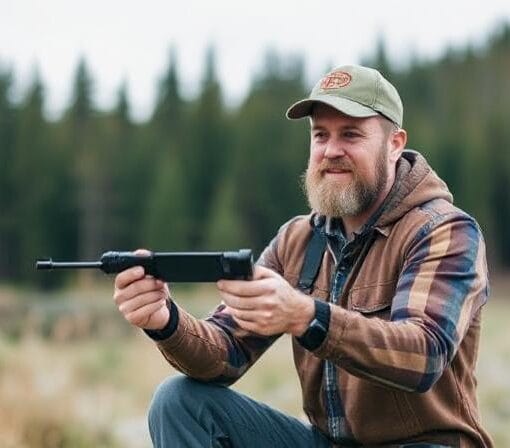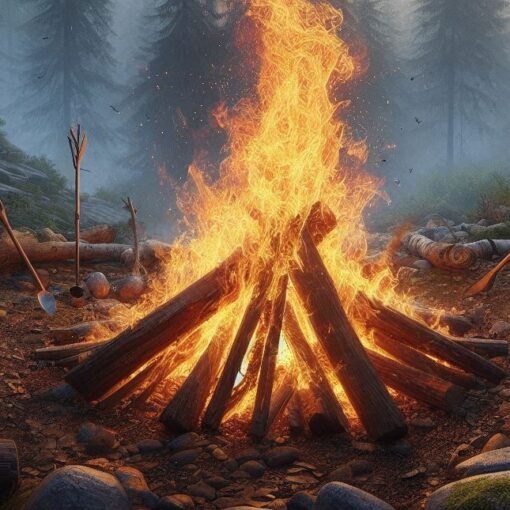Top Takeaways and Key Concepts
- Use a rainfly and seam sealant to keep your tent dry during heavy rain.
- Store clothes and gear in waterproof bags to prevent moisture damage.
- Choose high-quality waterproof gear like jackets, boots, and sleeping bags for reliable protection.
- Protect electronics with waterproof cases and pack backup batteries for safety.
- Store food in airtight containers and keep it elevated to deter animals and moisture.
Summary of This Article
This article explains how to stay dry and protect your gear while camping in wet weather. It emphasizes preparing before the rain starts by using a rainfly, sealing tent seams, and choosing higher ground for your campsite. Waterproof bags help protect clothes and food, while rain covers and trash bags safeguard backpacks. The article also highlights the importance of investing in quality waterproof gear like jackets, pants, and boots. It recommends using waterproof phone pouches and storing food in airtight containers to prevent both sogginess and hungry wildlife. With a little preparation, staying dry outdoors becomes easy and enjoyable.
Short Video Version of this Article
The lovely outdoors! Isn’t it just beautiful? The fresh air, the beautiful trees, and the great feeling of being free. But wait, what’s that in the sky? A scary cloud? Oh no! It might rain before you even have time to say, “Where did I put my rain jacket?” and ruin your quiet camping excursion.
Don’t freak out! I’m here to help you. Let’s talk about some simple ways to keep your things dry, even when the weather becomes crazy.
Please Note: This post may contain affiliate links. If you click one of them, we may receive a commission at no extra cost to you. As an Amazon Associate, I earn from qualifying purchases.

First, think about your tent. Make sure it has a rainfly and is a good one. When it rains, that extra layer helps keep water out. Check for holes or weak points in your old tent. A little duct tape can do a lot!
Next, your gear. Put your clothes and food in plastic bags or waterproof stuff sacks. They are like little shields that keep water out. If you really want to be secure, you can even put stuff in two bags.
Don’t forget your backpack! A rain cover is quite useful. In a pinch, a big trash bag will do the job. Just put it over your pack before it rains.
When you set up camp, aim for a place that is higher up. Low places fill up with water quickly. You don’t want to wake up in a pool you didn’t expect!
If it rains hard, don’t worry. Just stay inside your tent with a book or some munchies and wait it out. It might turn out to be an adventure you didn’t expect!
That’s it! You will be ready for any weather that comes your way if you follow these recommendations. You may enjoy the fresh air and gorgeous landscape without worrying about getting wet!
The Importance of Choosing the Right Gear
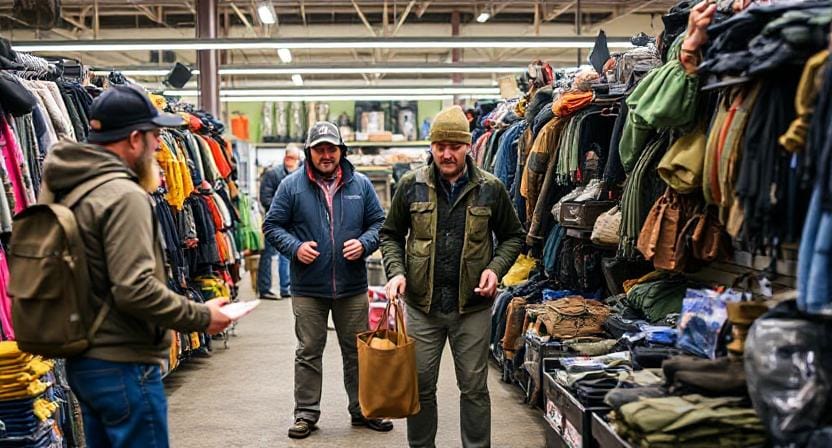
First things first, it’s really vital to choose the correct gear. You wouldn’t wear flip-flops in a snowstorm, would you? (Or would you?) So why not spend money on nice outdoor gear?
Look for things that say “waterproof” or “water-resistant.” There is a big difference! Water-resistant suggests it could be able to endure a light rain. If something is waterproof, it can handle a downpour without soaking up water. You really want watertight.
I remember one vacation when I tried to save money by buying a tent that wasn’t a brand name and promised “light protection.” That seems good, right? That tent turned like a swimming pool when the rain came down like an irate toddler with a juice box. We were really wet. What I learned: get good gear!
Don’t forget about your sleeping bag. A good one will keep you warm and dry. Put it in a plastic bag inside your backpack if it isn’t waterproof.
And don’t forget to wear shoes! Every penny spent on good hiking boots is worth it. Getting your feet wet may ruin any trip quickly.
Keep this conversation in mind the next time you go shopping for gear. Quality is important! It makes a big difference in whether you have fun outside or feel like you’re stuck in a wet sponge. Have fun on your trips!
Waterproofing Techniques for Your Tent
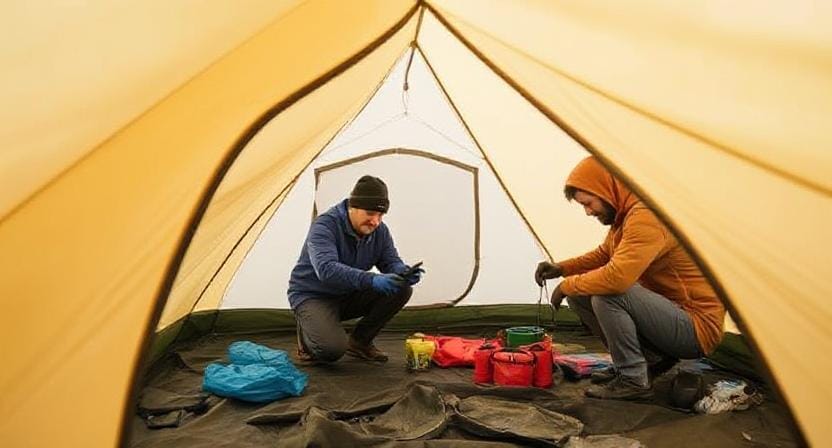
Now that we’ve talked about how to get the right gear, let’s talk about how to make your tent waterproof. Using seam sealer is one of the greatest ways. This magical remedy seals in microscopic holes where water could get in, like a raccoon at a picnic.
Before you go outside, just get some seam sealer from your neighborhood outdoor store and put a lot of it on all the seams.
It’s funny how many people forget about this step until they’re already wet and shivering in their tent. Trust me, if you do this ahead of time, you’ll feel like a superhero in the great outdoors instead of someone who just lost a fight with nature!
You could also want to put a footprint or ground tarp under your tent to keep moisture from getting in from below. It adds an extra layer between your comfy sleeping bag and any puddles that could be threatening to ruin your celebration.
Rain Gear: Dress for Success
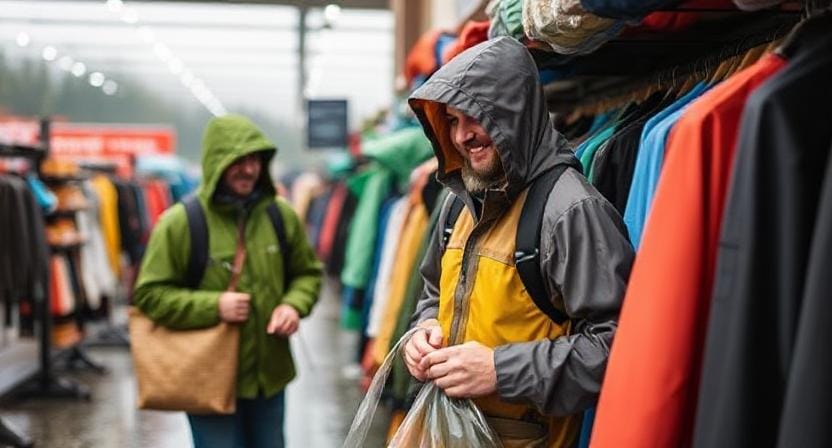
Speaking of dressing for success (and survival), let’s chat about rain gear! A good rain jacket is a must-have. It keeps you dry and makes you look pretty cool, even if you’re just standing around waiting for the storm to pass.
When you’re shopping for rain jackets, look for breathable fabrics. You want something that lets air in so you don’t end up looking like you just jumped into the ocean after five minutes of wearing it. That’s not a fun look. And seriously, leave those plastic ponchos behind unless you want to feel like you’re stuck inside an inflatable balloon when the wind kicks up. Not comfy at all!
Waterproof pants are key too! Sure, they might not be as stylish as your favorite jeans, but trust me—they’ll keep your legs dry when you’re splashing through muddy trails or sitting on wet logs enjoying nature’s beauty (or dodging raindrops).
Imagine this: you’re out there in the wild, having a blast, and suddenly it starts pouring. With good rain gear, you can still enjoy your adventure instead of running for cover like a startled squirrel.
So next time you’re gearing up for an outdoor trip, remember to grab that rain jacket and some waterproof pants. You’ll thank yourself later when you’re warm and dry while everyone else is soaked and shivering! Enjoy those adventures!
Keeping Your Electronics Safe
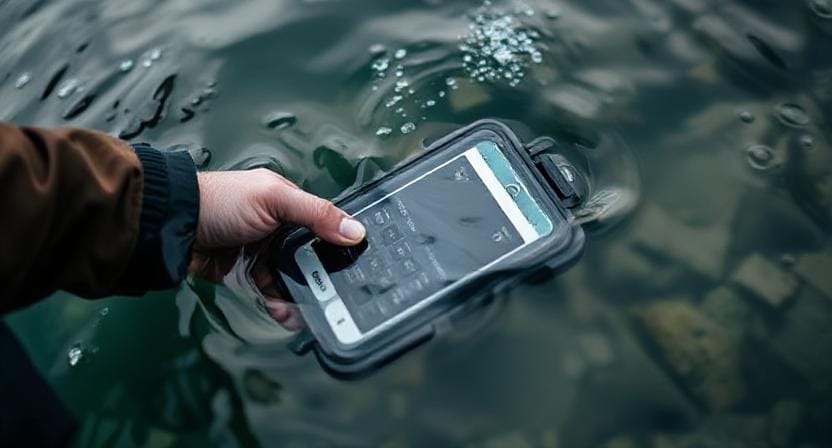
Let’s face it: our phones are practically extensions of ourselves these days—and losing one to water damage is akin to losing a limb! To prevent such tragedies during your adventures, invest in waterproof cases or pouches specifically designed for electronics.
I remember this one hike when dark clouds rolled in out of nowhere. You know how that goes, right? Instead of freaking out and stuffing my phone into my pocket—such a bad idea—I pulled out my trusty waterproof pouch. I popped my phone inside and felt like a genius.
While everyone else was scrambling to save their phones from puddles that looked like tiny lakes, I was snapping pictures without a care in the world! It felt great knowing my phone was safe and dry while capturing those beautiful moments.
And here’s a little tip: always pack backup power sources too! Portable chargers are lifesavers. If you’re heading off on long trips where charging stations are as rare as Bigfoot sightings, you’ll be so glad you brought one along. Nothing worse than running out of battery when you need your phone for directions or taking more photos.
So next time you’re out in nature, keep that waterproof pouch handy and don’t forget about your portable charger. You’ll have peace of mind to enjoy every moment!
Food Storage Solutions That Work
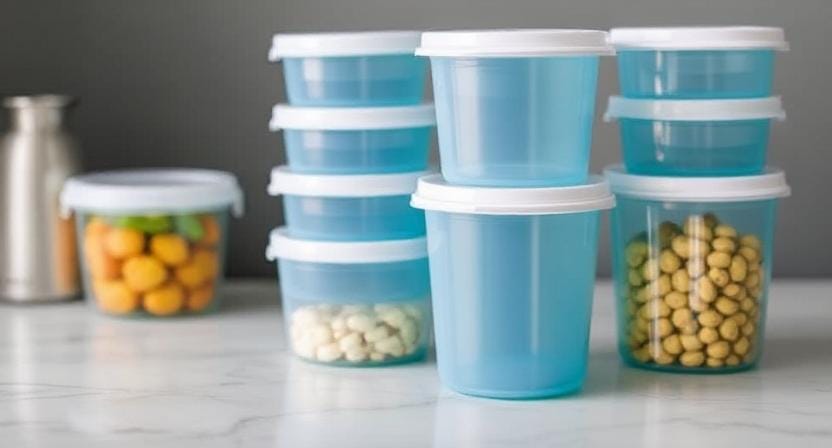
Food storage might not seem directly related to waterproofing—but hear me out! If there’s one thing worse than being wet outside it’s discovering soggy snacks due to unforeseen downpours ruining everything deliciously edible!
Investing in airtight containers ensures food stays fresh regardless of weather conditions—and prevents unwanted visitors (like bears) from sniffing out dinner plans gone awry!
Oh my, I recall this camping trip when we completely forgot about where to put the food. You can probably guess what happened next. Raccoons came over like they were throwing a party! We couldn’t do anything but sit inside our tents and try not to giggle while they had the nicest meal ever.
It was entertaining and also annoying to see those little thieves go through our goodies. It’s crazy how fast they can find food if it’s not stored properly. So, here’s a tip: always make sure your food is safe. Even if they aren’t actually bear-proof, use bins or bags that say “Bear-Proof.” You might feel safer only because you have that label, right?
This will keep everyone from having to deal with extra turmoil later on! No one wants raccoons to ruin their camping trip. You can trust me on that!
Conclusion: Embrace Adventure with Confidence
So, here’s what you need to know about waterproofing. You know, it’s all about being ready for those unexpected rain showers. You want to be ready when the rain starts, right? Choosing the right gear is very important. Consider obtaining good rain jackets and sealing seams. It really does make a difference!
Picture this: you’re outside enjoying nature when it suddenly starts to rain. You don’t feel grumpy about damp socks squishing in your shoes; instead, you giggle since your clothing keeps you dry. That’s the objective!
You may really enjoy the outdoors without worrying too much if you get things ready ahead of time. We can enjoy the beauty surrounding us and have a good day together! Who likes marshmallows that are wet? Not me! While we roast our treats over the fire, let’s make sure they stay dry. That sounds a lot better!
Frequently Asked Questions
What is the best way to keep my tent dry in the rain?
The best way to keep your tent dry is to use a rainfly and seal the seams before your trip. Adding a ground tarp underneath also prevents moisture from seeping in from the ground. Always check your tent for holes or weak spots before heading out.
What gear should I waterproof before camping?
You should waterproof anything that could be ruined by water, especially your tent, backpack, sleeping bag, clothing, and shoes. Electronics and maps should go in waterproof pouches or bags, and backpacks should have rain covers.
What’s the difference between waterproof and water-resistant gear?
Water-resistant gear can handle light moisture but will eventually soak through in heavier rain. Waterproof gear is designed to block out rain completely and keep you dry even during a downpour, making it the better choice for camping.
How do I protect my clothes and food from getting wet?
Pack clothes and food in waterproof bags or dry sacks. Double-bagging is a smart move in heavy rain. Airtight containers are great for keeping food dry and safe from animals too.
Do I really need special rain gear, or can I use a poncho?
A basic poncho works in an emergency, but proper rain gear—like a breathable waterproof jacket and pants—keeps you much drier and more comfortable. Good gear prevents overheating and protects you from wind and cold too.
How do I keep my electronics safe from water damage outdoors?
Store your phone, GPS, batteries, and chargers in waterproof cases or sealed plastic bags. Keep them inside your pack when not in use and carry a backup power source since wet weather drains batteries faster.
Why is food storage important in wet conditions?
Wet food spoils quickly and attracts animals. Using airtight, waterproof containers keeps your food dry and prevents smells from escaping. Storing food up high or away from camp also helps protect it from curious wildlife like raccoons or bears.
Suggested Resources:
The Ultimate Guide to Camping Gear
http://www.campinggearguide.com/ultimate-guide-to-camping-gear
How To Choose the Best Rain Jacket for Hiking
https://www.hikingadventures.com/best-rain-jacket-hiking
Waterproofing Tips for Tents and Gear
https://www.outdoorlife.com/waterproof-tents-gear/

Kevin Collier is a seasoned outdoor enthusiast and writer for Trekbug.com, specializing in outdoor adventures, survival strategies, and prepping insights. With a deep love for nature and a commitment to self-sufficiency, Kevin empowers readers to embrace the wilderness confidently. He shares valuable tips, practical techniques, and inspiring stories, helping both novice and experienced adventurers develop essential skills for surviving and thriving in the great outdoors.


